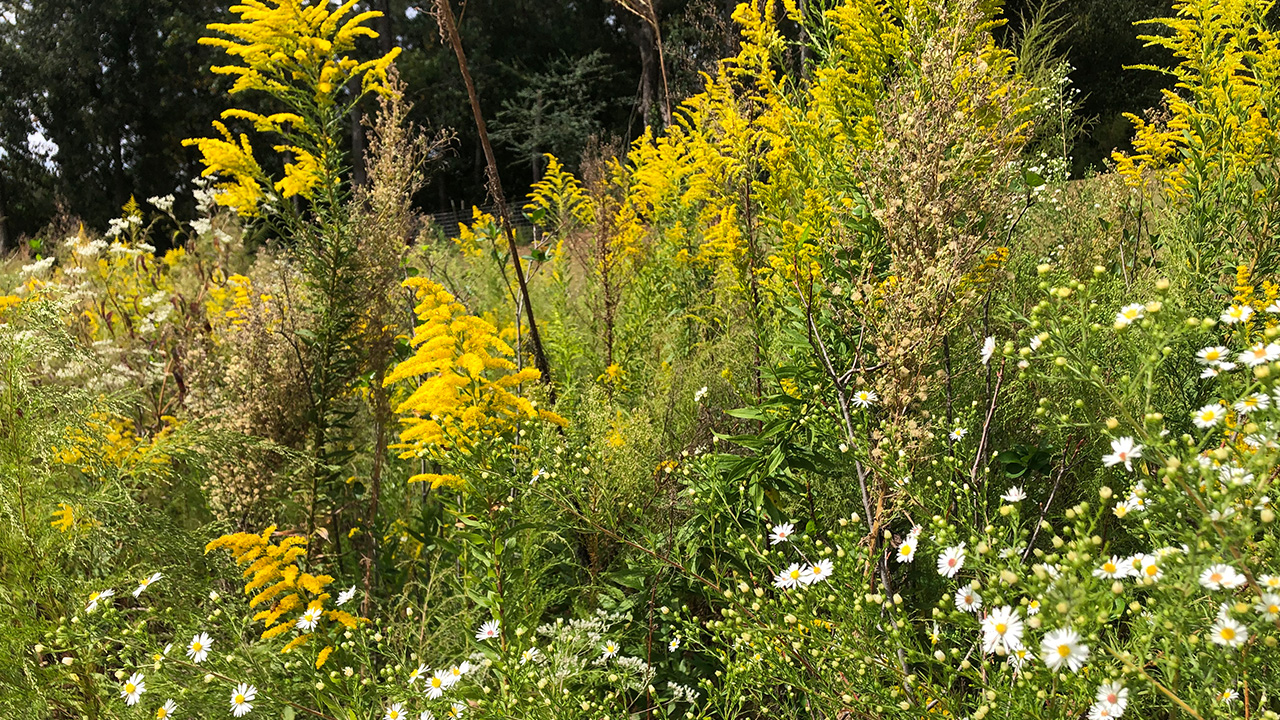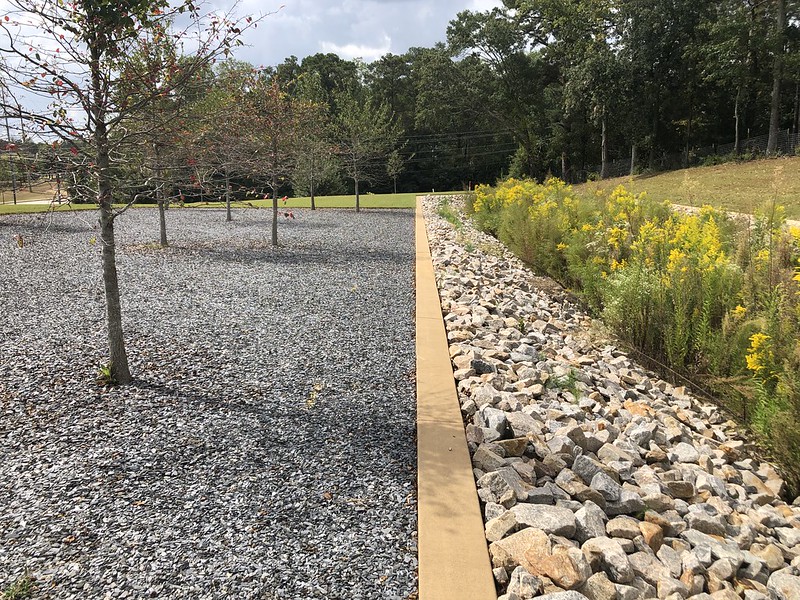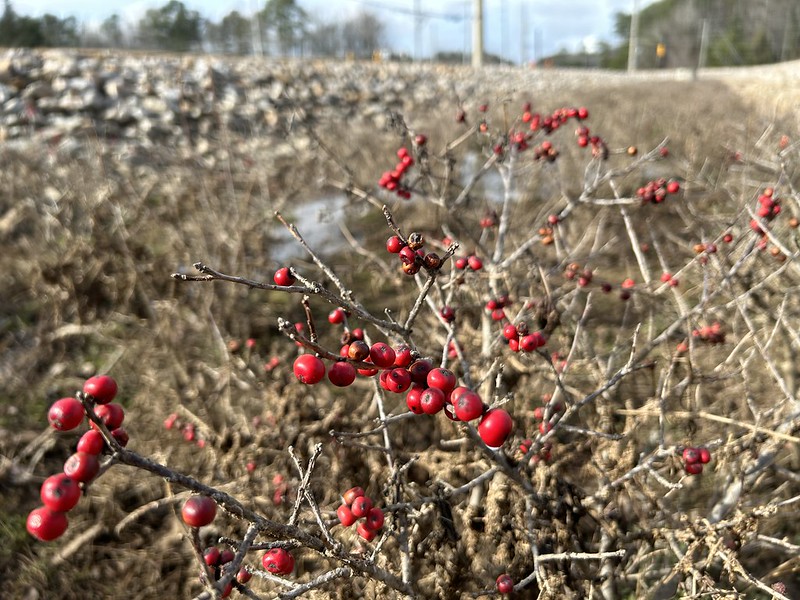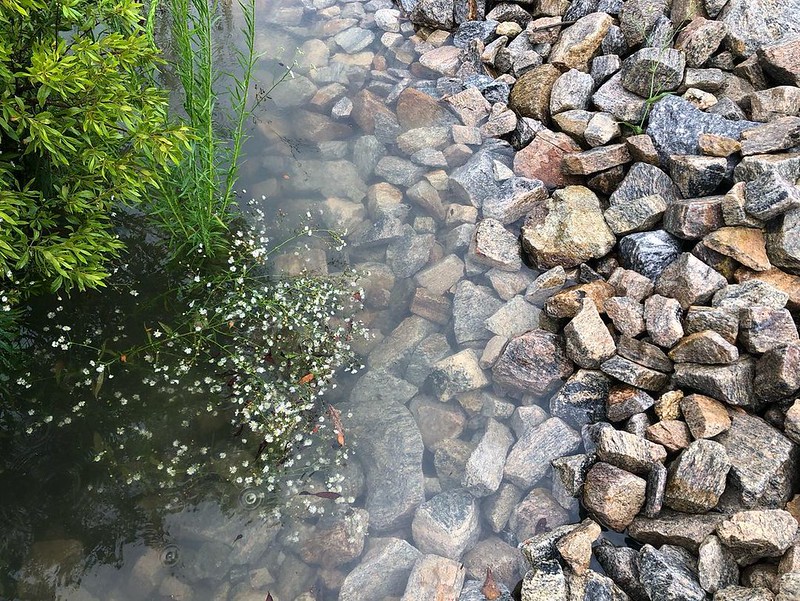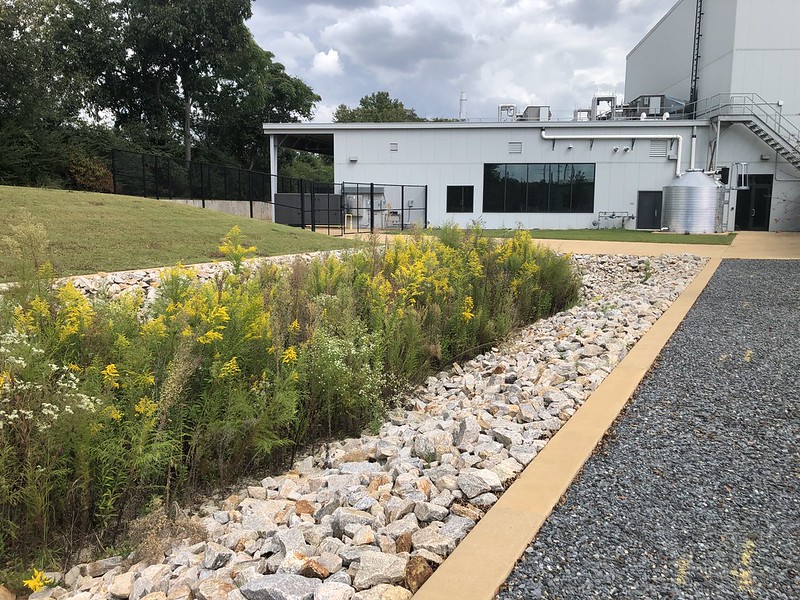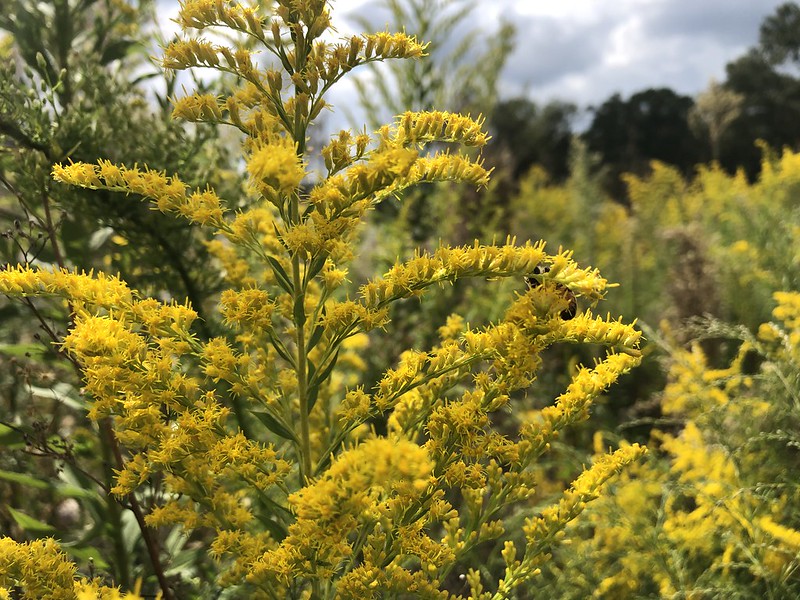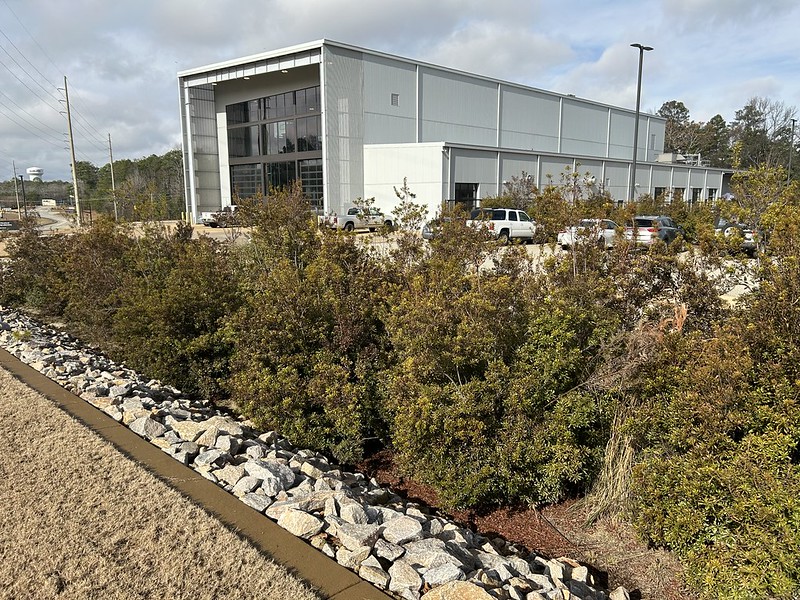content body
Most drivers on Samford Avenue notice the impressive building with its shiny glass wall, massive garage doors and orange overhead cranes and recognize it as the Samuel Ginn College of Engineering’s Advanced Structural Engineering Laboratory (ASEL).
But did you know this site is also home to research on the perfect plant species for stormwater basins?
When the building was completed in 2020, David Hill, associate professor and chair of Auburn’s Landscape Architecture program, was the landscape architect who designed and oversaw the installation of the basins, which are ponds created to collect and store runoff, through his firm HILLWORKS. Three years later, he has returned to ASEL to study whether the basins’ plant life is effectively cleaning the stormwater that runs off the roof of this 42,000-square-foot facility.
“These basins are like bathtubs with really small holes in the bottom,” Hill said. “They’re designed to hold water for 24 to 36 hours, which slows the flow of the stormwater enough to dramatically reduce downstream erosion, but not so much that it causes a mosquito problem. Some basins are doing a lot better than others, so we’re going to see how our plants are growing and what volunteer species have emerged over the last three years.”
And when he says volunteer species, Hill is referring to what most of us call “weeds.”
“They’re feisty plants that can handle anything,” he said. “This is not a large-scale project, but it has the potential of opening up a dialogue and changing people’s perspective on what we call ‘weeds.’ We’re trying to get away from the idea that volunteer species are bad and instead see them for how resilient they are.”
In addition to housing plants and cleaning stormwater, the basins are also designed to grow over time into active ecological patches of protected habitat for birds and insects.
Now that you know about the outside of ASEL, see what goes on inside!
Take a virtual tourSo where are these basins we miss every time we drive by?
1. The largest basin, where Hill originally planted chokeberry, is located behind ASEL. It is now home to a dramatic explosion of growth in volunteers including goldenrod and aster, which are great species for the bees living down the street at the Auburn Bee Lab. This long, rectangular installation serves as protected wild and enhances the adjacent seating area that’s enjoyed by employees, students and visitors.
2. The basin that has performed best is on the east side of the building, closest to the Auburn University Community Garden, and is filled with a large evergreen shrub called wax myrtle. Hill is happy to see it’s a busy habitat for birds, and the amount of rainwater it can hold and clean is impressive. The wax myrtle’s height blocks drivers’ view of ASEL’s fenced-in outdoor workspace filled with engineering materials and equipment.
3. The basin located between the parking area and the facility’s administrative wing, which contains a flowering shrub called clethra, is currently Hill’s biggest concern. He plans to take soil samples to Auburn’s Soil, Forage & Water Testing Laboratory to uncover just what’s gone wrong. “The trees look great, but the clethra is not liking it, so we’ve got to figure out what’s going on with the soil,” he said. “Clethra’s a resilient species, so why did it hate it so much? Of the four basins, this one makes us scratch our heads — what happened here?”
4. The final basin, located in front of the parking lot close to Samford Avenue, is the last stop for water from all three other basins before it enters storm drains. In this spot, Hill planted slow-growing winterberry holly shrubs, and while they’re doing well, he’s hoping they eventually double in size. “Once they get another foot on them, they’ll look a lot better year-round,” he said. “But in here we have found some weeds — really ugly ones we’re trying to get rid of. Part of the research is finding plants that will outcompete invasive species like these.”
As the weather warms up and the plants come alive, Hill will be working to solve the mystery of the unhappy clethra and studying the unwelcome weeds invading the winterberry holly. He hopes his findings can impact how landscape architects and engineers deal with runoff from large buildings in the future. For now, he knows it’s important to share this knowledge with students right here on campus, including engineering majors working in ASEL.
“It might look kind of rough around the edges, but these little strips have become a really great habitat opportunity,” Hill said. “Hopefully every engineering student who comes through this building thinks, ‘Well, that’s different than what I was expecting.’”



